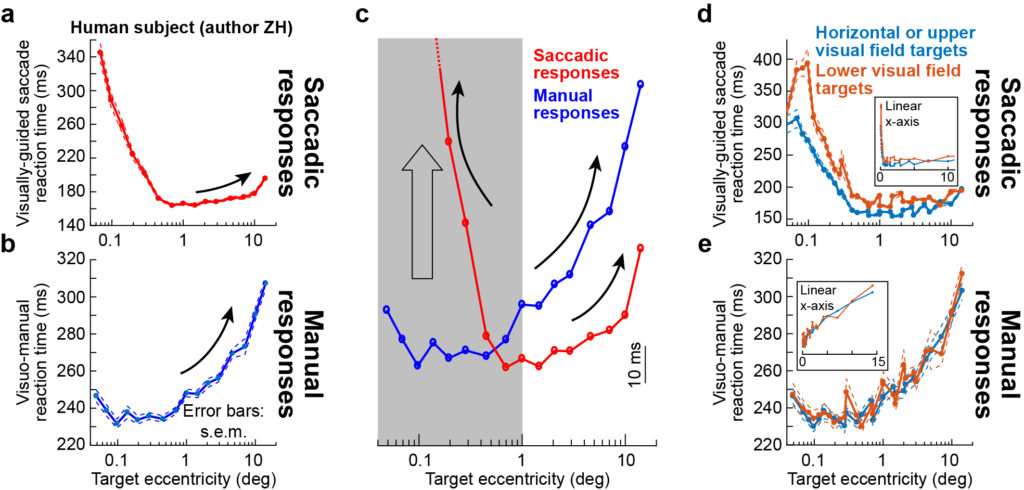We have a new paper in press at the Journal of Neurophysiology!
In this study, in collaboration with a colleague at Aix-Marseille University and CNRS (Laurent Goffart), we investigated in great detail the latencies of small saccadic eye movements. Even in a simple reflexive paradigm, saccade reaction times are much longer than the fastest possible conduction delays between retinal inputs and oculomotor neurons that drive the eye muscles. Curiously, if the reflexive saccade is very small (as in the case of microsaccades, which we can generate at will), the reaction times become even longer, reaching almost half a second! It is not clear why such an effect happens, and it is certainly absent if we have to tap our finger reflexively in response to a small-eccentricity visual flash. So, this effect does not seem to be dependent on visual detection in the fovea per se, and it is specific to the generation of eye movements as opposed to manual movements.
In our work, we used our neurophysiological insights (like here or here or here) to suggest that reaction times are longer for small eccentricities because gaze fixation itself is a balance among many competing small movement “commands”.

